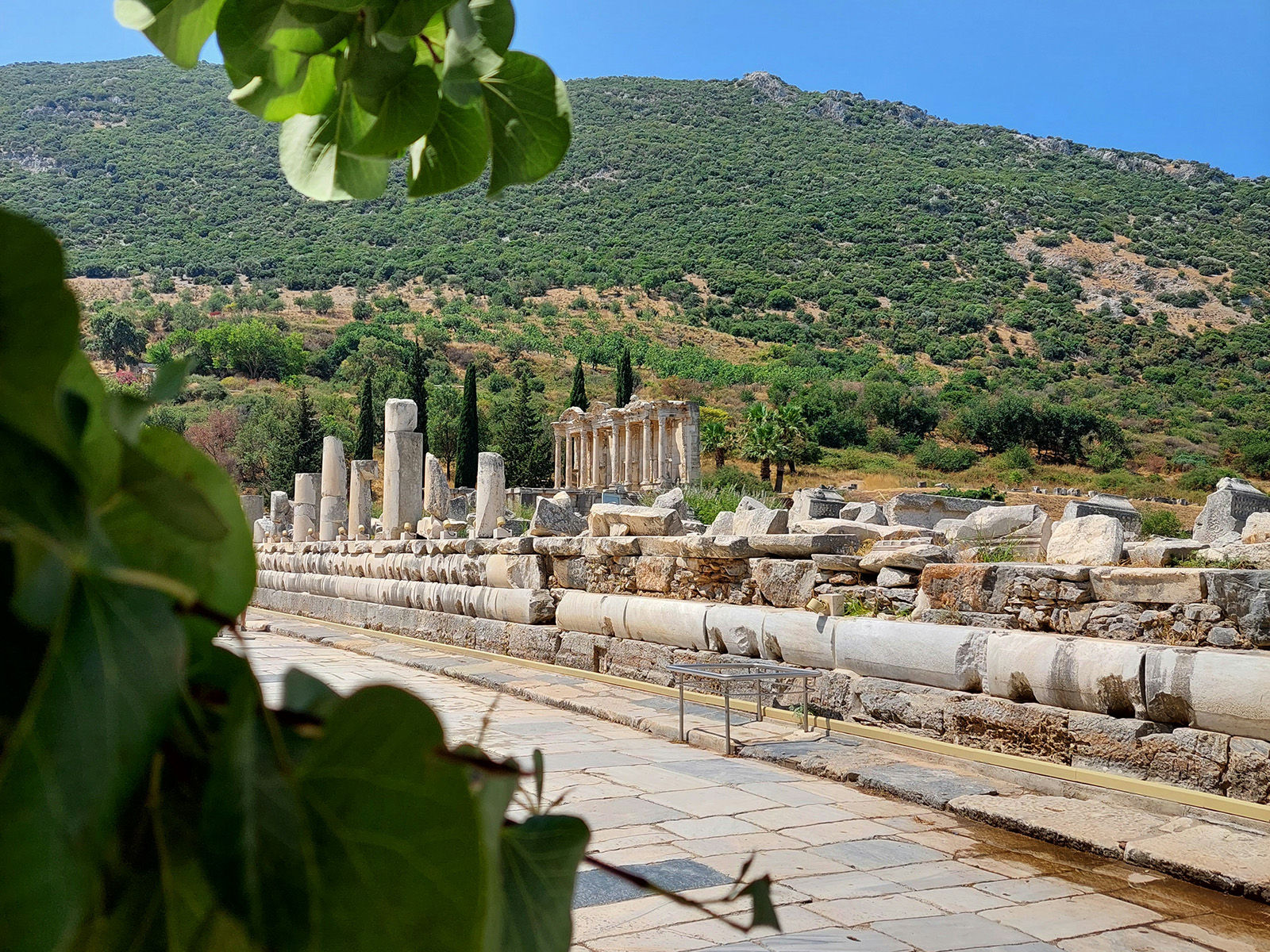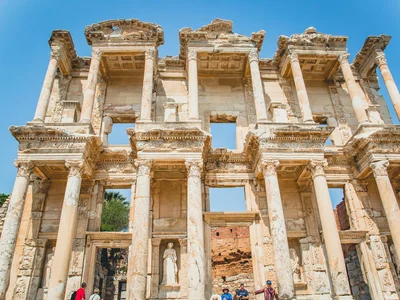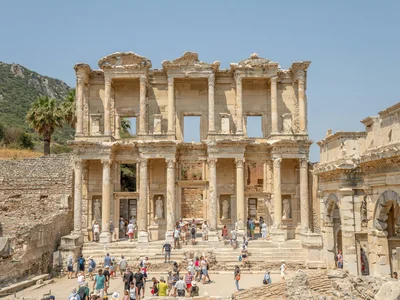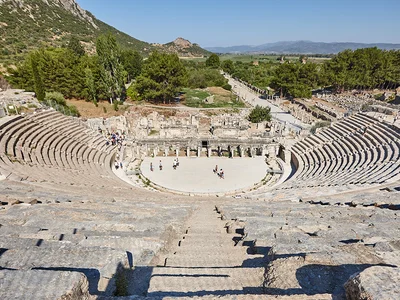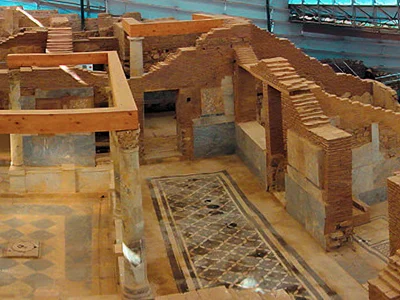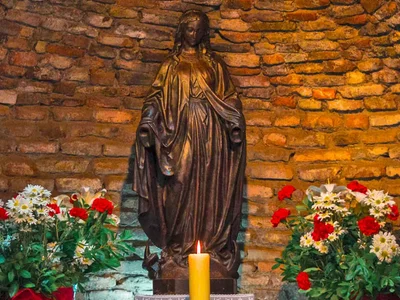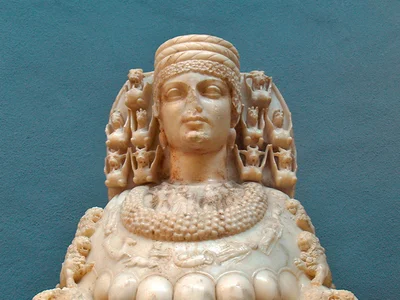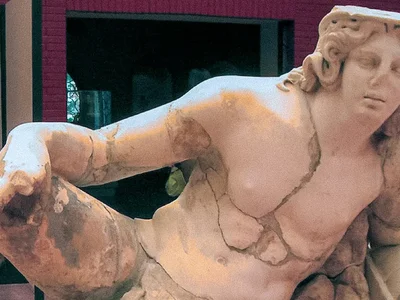Ephesus, situated a mere 18 kilometers from Kusadasi, is celebrated as a prominent ancient metropolis globally. Established by Attic and Ionian Greek settlers around the 10th century BC, Ephesus boasts UNESCO World Heritage status. Notably recognized for its adjacency to the Temple of Artemis, one of the Seven Wonders of the Ancient World, Ephesus is rich in historical and cultural importance. Additionally, it holds religious significance for Christians, being one of the seven churches of Asia Minor.
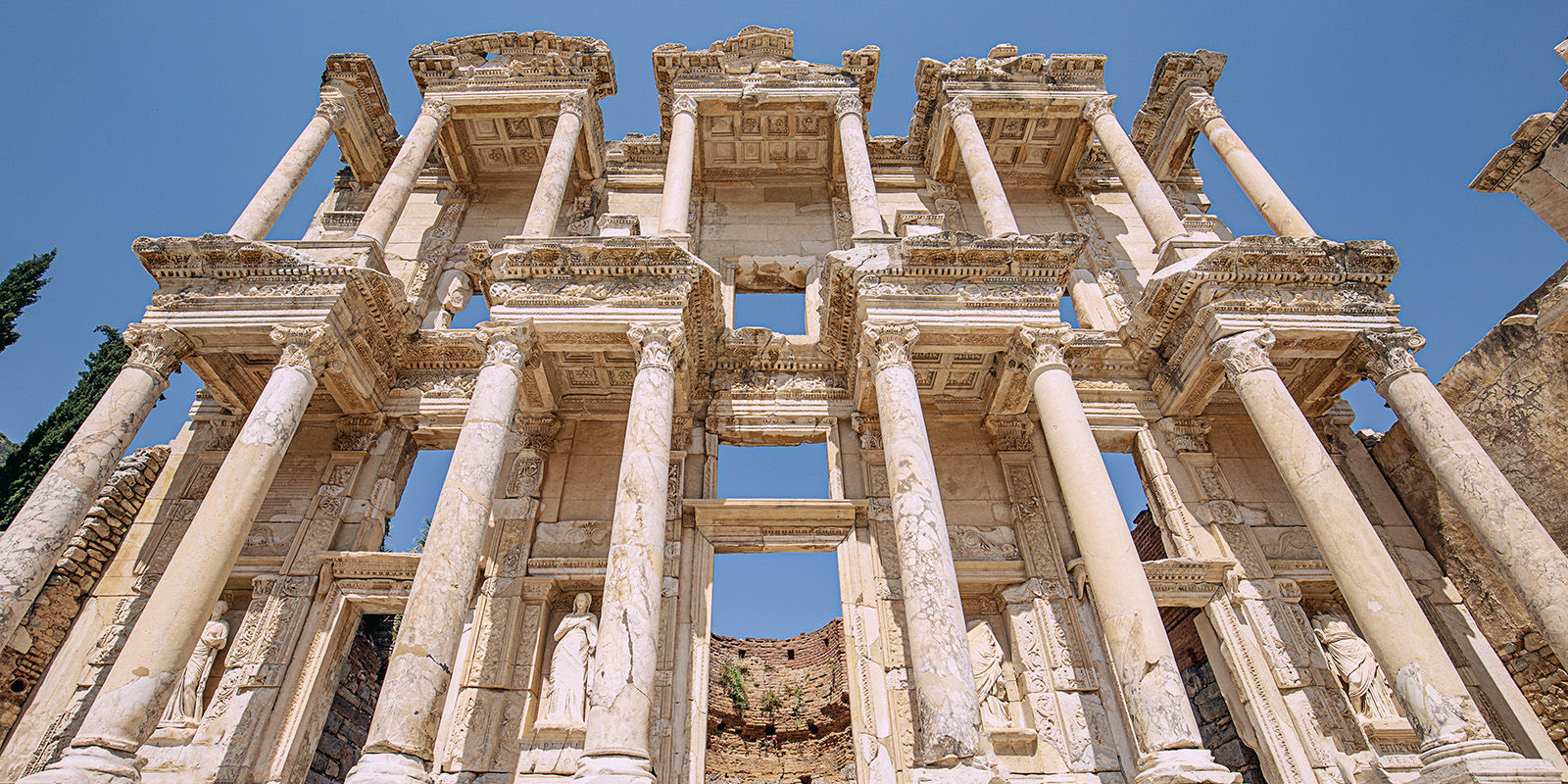
Odeion
This semi-circular edifice, also referred to as the Small Theatre, was originally
constructed around 150 A.D. as a bouleuterion (council chamber) by Publius Vedius Antonius
and his wife Flavia Papiana. Designed to accommodate 1,400 seated spectators, it served
dual purposes as both a bouleuterion and a small covered theater.
Consisting of three main sections—cavea (auditorium), orchestra (acting area), and skene
(stage building)—the Odeion showcased fine craftsmanship in its marble seating. The likely
two-storeyed skene featured a narrow marble podium with five doors, the central one being
taller and wider. The semi-circular orchestra, lacking rainwater gutters, suggests
the Odeion was roofed. It functioned as both a concert hall and a venue for council meetings.
Temples of the Goddess Rome and Divine Caesar
In the time of Augustus, the influence of Imperial Roman cults spread across many
provinces in Asia Minor. Augustus sanctioned the construction of a temple honoring the
Goddess Rome and Julius Caesar during a visit in 29 B.C.
Located near the Prytaneion, the temple became a focal point for Romans residing in
the province. Its architectural style, typical of Ancient Rome but rare in Asia Minor,
remains evident in the ruins found near the Odeion today.

Prytaneion
Originally built in the 3rd century B.C., the Prytaneion underwent major modifications
under Augustus. After being dismantled, some of its architectural elements were reused
in the Scholastika Baths but later restored to their original location.
The Prytaneion functioned like a town hall, hosting public events and rituals.
Inside the Temple of Hestia Boulaia, a perpetual sacred fire symbolized civic worship.
Nearby, a triangular structure from the Door of Heracles features Winged Nike,
the Goddess of Victory, holding a braided crown.
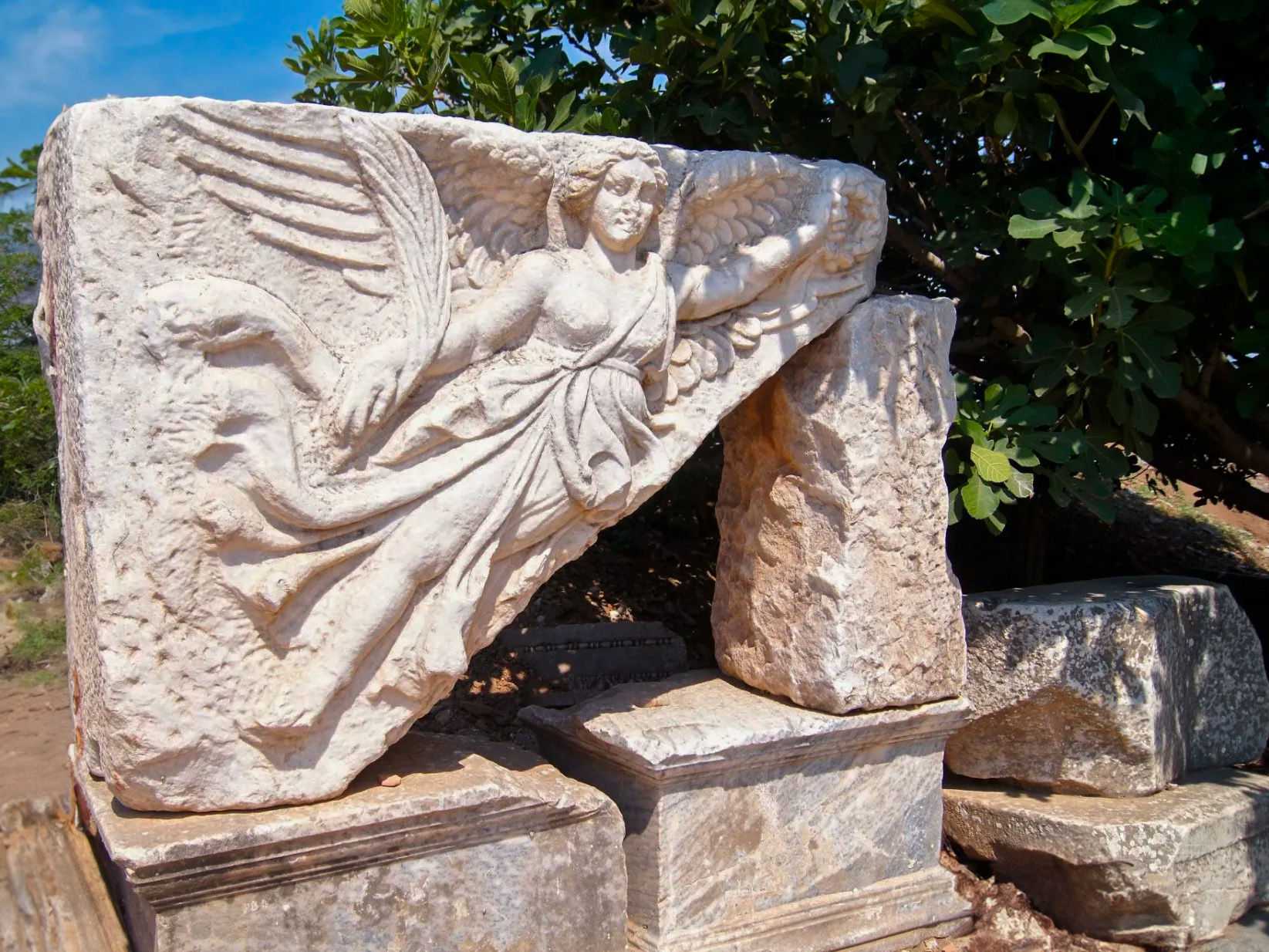
The Pollio Fountain
East of Domitian Square, next to the Agora, lies the Pollio Fountain. Built in 97 A.D. by Sextilius Pollia, it features a pool with an apsidal wall and a now-relocated statue group depicting Odysseus and Polyphemus, originally from the Temple of Isis.
Temple of Domitian
Built on a 50×100 meter terrace during Emperor Domitian’s reign (81–96), the temple featured a 24×34 meter podium and a prostyle design. Though little remains, recovered reliefs and architectural fragments suggest its grandeur and political significance.
The Gate of Heracles
This two-storey gate marks the beginning of Curetes Street. The lower level had an arch, while the upper featured columns and reliefs of Nike. Two columns depict Heracles in a lion skin, exemplifying exquisite 2nd-century craftsmanship relocated here in the 5th century.
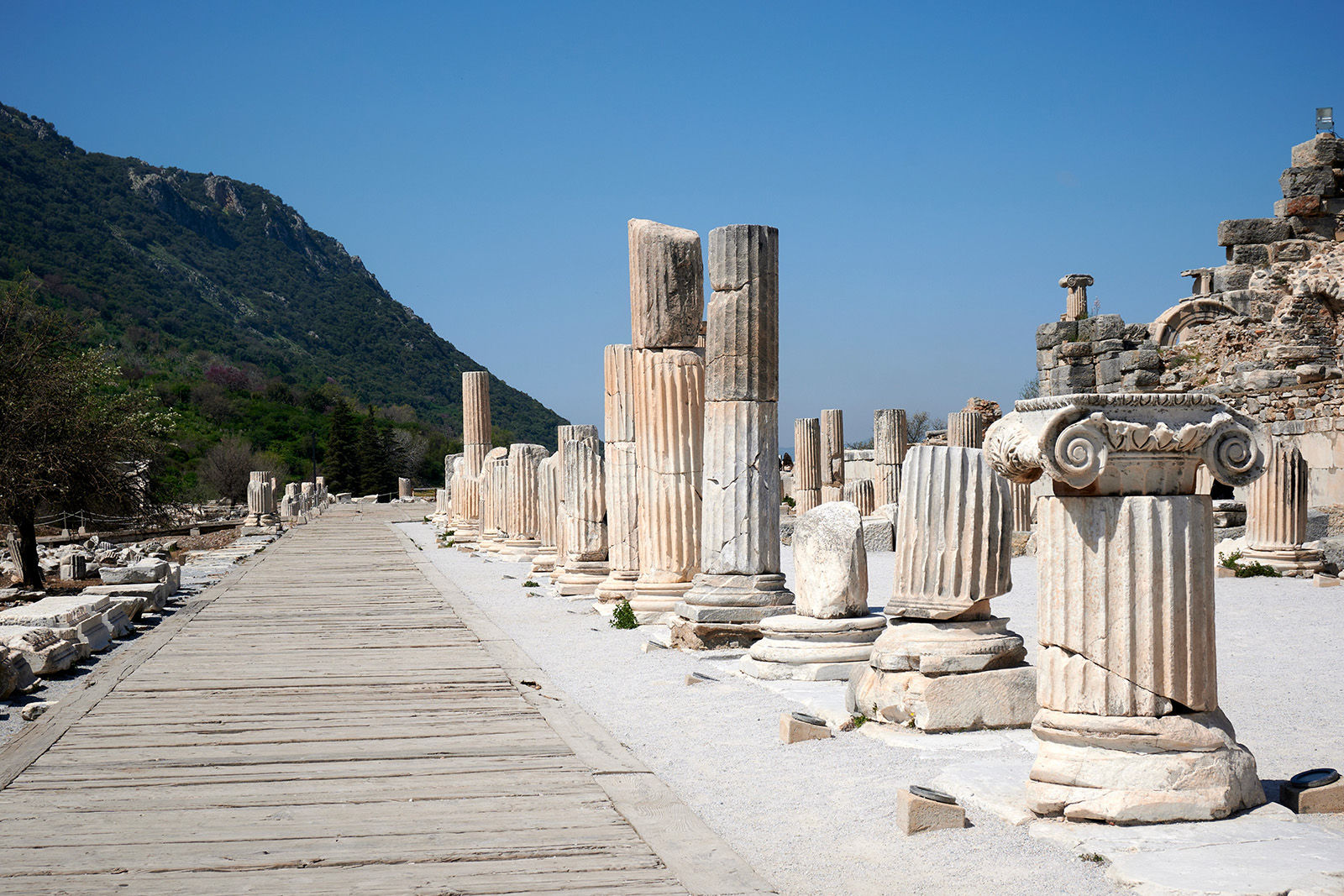
Curetes Street
Named after the priestly class associated with Artemis's birth, Curetes Street runs from the Gate of Heracles to the Celsus Library. Over time, the Curetes gained prominence, with their sacred duties centered in the Prytaneion. Today, this central thoroughfare reflects Ephesus’s religious and civic legacy.
Trajan Fountain
Built between 102–104 A.D. and dedicated to Emperor Trajan, this monumental fountain once stood 12 meters tall. It featured Corinthian columns and a central statue of Trajan. Sculptures of the Imperial Family and mythological figures once adorned the structure and are now preserved in the Ephesus Museum.
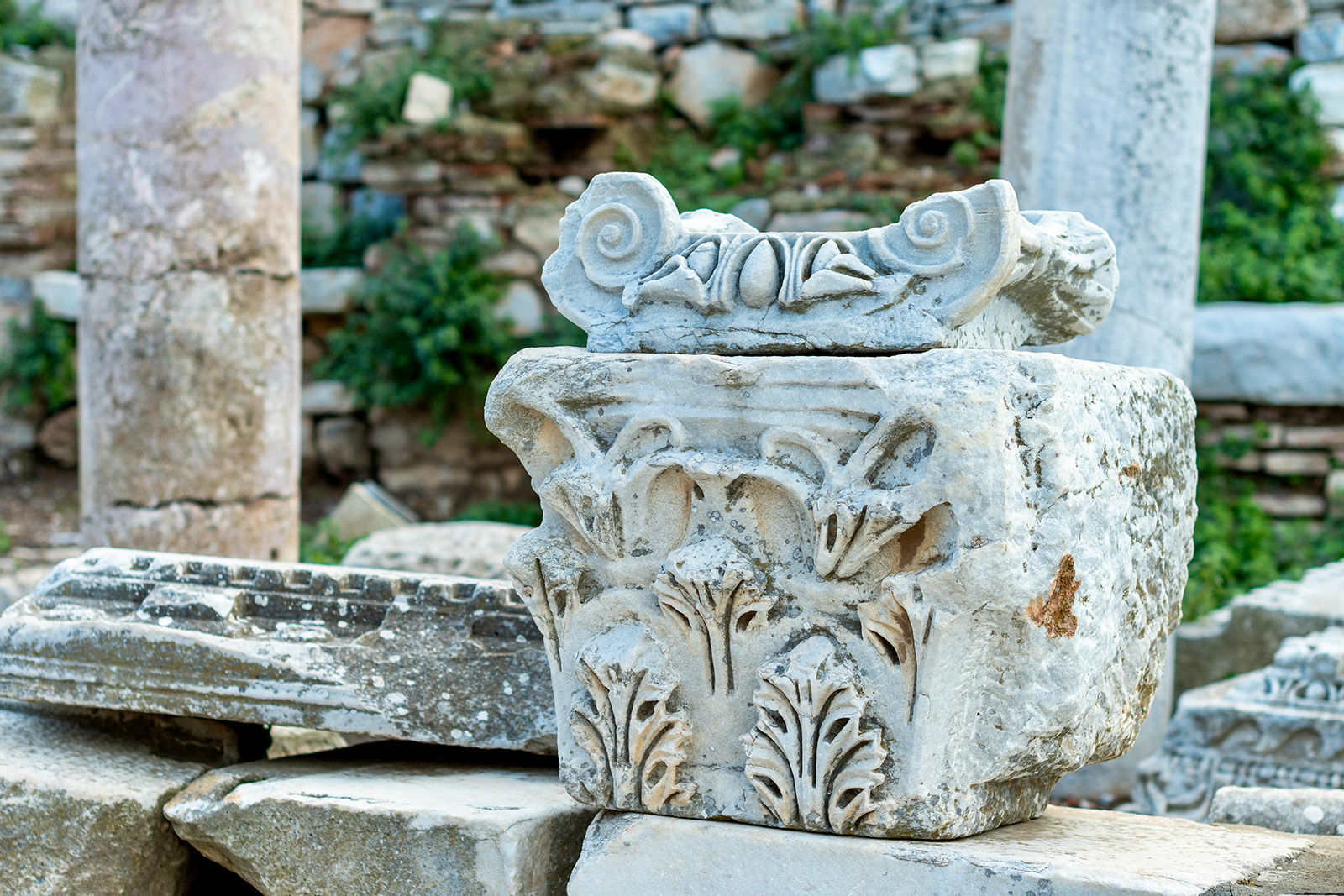
Temple of Hadrian
One of Curetes Street’s most striking structures, the temple was completed by 138 A.D.
It features four Corinthian columns and a pediment arch topped by a bust of Tyche.
Decorated with classical motifs, the facade also displays statues of the Tetrarchy—
Diocletian, Maximian, Constantius Chlorus, and Galerius.
Ephesus Public Latrines
Dating to the 1st century CE, these latrines were part of the Scholastica Baths.
Featuring marble seats, a central pool, and heated seating, they served as social spaces.
Sponges on sticks were used for cleaning. Archaeological findings revealed evidence of
parasite infections, reflecting the sanitation challenges of Roman public life.

Marble Street
Leading from the Library of Celsus to the theater, this 1st-century street was rebuilt under Eutropius in the 5th century. Deep grooves from carts are still visible today. Alongside the street are remains of Nero-era colonnades and porticos.
Harbour Street
Spanning 500 meters and 11 meters wide, Harbour Street was lined with porticos and shops.
Statues of the Four Evangelists once stood on Corinthian columns in its center.
Christian influence is evident in the decorative patterns, likely added in the 6th century
under Justinian.
